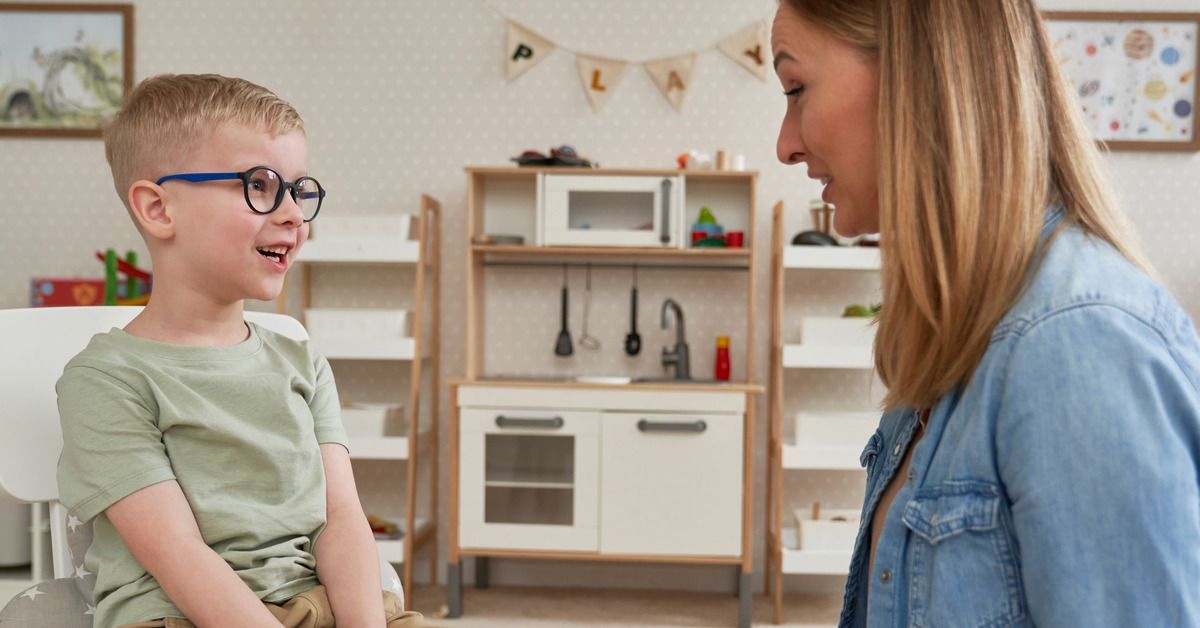Methods for Supporting Children With Autism in the Classroom
Autism spectrum disorder (ASD) impacts how a child processes information, interacts socially, and manages emotions, creating potential barriers to learning if not properly supported. For educators, understanding and implementing tailored approaches is essential for promoting academic and personal growth.
This guide will explore methods for supporting children with autism in the classroom, offering practical solutions that empower teachers and guardians alike.
Understanding Autism in the Classroom
ASD is a developmental condition that affects social interaction, communication, and behavior. Children with autism may display repetitive behaviors, struggle with sensory sensitivities, or have challenges interpreting verbal and nonverbal cues. These traits often translate into obstacles in traditional classrooms, particularly when environments fail to adapt to a child’s needs.
For instance, a loud, bustling classroom may overwhelm a child with heightened sensory sensitivities, while traditional teaching methods might not align with a child’s strength in visual or experiential learning. Recognizing these signs is the first step to crafting a more inclusive educational space where children with autism can participate and excel.
Unique Learning Needs
Children with autism often experience challenges, including difficulty regulating emotions, engaging socially, or adapting to unpredictable changes in a classroom environment. Sensory processing differences may further complicate their ability to focus or remain comfortable in loud and dynamic settings.
By acknowledging these differences, teachers and parents can focus on strengths while developing strategies to overcome obstacles. Success for children with autism often stems from reducing stressors such as overstimulation and offering alternative ways to engage with educational material.
Effective Methods for Supporting Children With Autism
Behavioral Interventions and Applied Behavior Analysis (ABA) Therapy
Behavioral strategies rooted in ABA provide structured methods to promote desirable behaviors while reducing those that interfere with learning. For example, implementing reinforcement for completing tasks can encourage consistency and build confidence in children. ABA’s data-driven approach also ensures progress is measurable, helping educators fine-tune their techniques over time.
Classroom aids can apply ABA principles, such as breaking lessons into manageable steps or fostering positive peer interactions, to promote engagement and collaboration. Organizations like HANDS Center for Autism help train professionals in these methods for effective use in real-world settings.
Creating a Structured Environment
Consistent routines provide a sense of security for children with autism, lowering anxiety while boosting confidence. Teachers can establish predictable schedules, clearly label areas within the classroom, and offer transparent rules to create an optimal environment for learning. For example, dividing classroom time into structured blocks for lessons, breaks, and interactive activities ensures continuity and reduces stress caused by uncertainty.
Visual Supports and Schedules

Visual aids like picture schedules, charts, and instructional diagrams offer simplicity and help children with autism better understand their daily routines. These tools provide cues for smooth transitions between activities, minimizing confusion or resistance.
For instance, a chart illustrating the timeline for the day—paired with symbols representing activities—can normalize transitions such as moving from classwork to recess. Visual reminders are excellent self-regulation tools, allowing children to manage their time while building independence.
Individualized Instruction and Modifications
Every child with autism has unique strengths and challenges, making individualized strategies vital. Teachers should adapt materials, adjust expectations, and modify assignments based on a student’s specific needs.
A child with fine motor challenges might benefit from using assistive technology to type responses rather than handwriting assignments. Similarly, integrating topics aligned with a child’s interests (e.g., dinosaurs or outer space) into lessons can foster curiosity and engagement. By combining understanding with flexibility, educators can make academic concepts more accessible.
Incorporating Sensory Breaks
When children with autism become overwhelmed, sensory breaks can help them reset and refocus. Simple activities such as stretching, squeezing a stress ball, or engaging with tactile objects provide much-needed relief from overstimulation.
Setting up a designated sensory space, meaning a quiet corner equipped with calming tools, allows children to self-regulate without disrupting overall classroom dynamics. These short, purposeful pauses help children manage frustration and maintain their ability to learn effectively.
Collaborating With Families and Professionals
Families, therapists, and educators must work together to establish consistent strategies that address a child’s developmental and educational needs. Open communication ensures that everyone involved understands the child’s progress, behaviors, and challenges. Regular meetings allow educators to exchange feedback with parents and adjust approaches when necessary.
Organizations like HANDS Center for Autism play a pivotal role in guiding families and educators through evidence-based strategies to help these children succeed. Our Autism Therapy Center (North Carolina) is an invaluable resource. We work closely with families and educators to provide training, guidance, and access to personalized care plans.
Our expertise equips schools and caregivers with tools to tackle behavioral, social, and academic needs for children with autism. Professionals at such centers can supplement classroom efforts so children receive well-rounded support in every aspect of their lives.
Promoting Social Interaction and Peer Relationships

Social skills often need deliberate practice for children with autism. Classroom activities like role-playing scenarios, turn-taking games, or guided discussions can help children gradually improve their communication. Collaborative projects with peers offer additional opportunities to practice teamwork, establish rapport, and build friendships.
Promoting inclusiveness benefits all children, fostering mutual respect and understanding. Peer education programs that address autism can reduce stigma, encouraging a culture of compassion and empathy. Teachers can actively support inclusion by celebrating all students’ achievements and emphasizing teamwork.
The Role of Technology in Supporting Children With Autism
Technology like speech-generation devices, apps with step-by-step tutorials, and interactive tools can help children with autism overcome communication barriers. Tablets loaded with educational software or visual trackers can turn complex topics into engaging, manageable lessons while offering personalized learning experiences.
Technology facilitates learning and allows for efficient progress tracking. Educators and therapists can use data gathered from communication devices or learning apps to identify patterns, evaluate progress, and adapt teaching strategies accordingly. These insights ensure continuous improvement and alignment with a child’s evolving needs.
Partnering for Long-Term Success
Understanding and implementing methods for supporting children with autism in the classroom is fundamental to helping them achieve academic and social success. Tailored strategies, combined with collaboration among parents, teachers, and professionals, can bridge the gap between challenges and opportunities.
The HANDS Center for Autism offers a range of resources for families and schools so that every child receives the support they need. By working together, we can make classrooms inclusive, enriching, and empowering spaces for all children. If you’re ready to learn more about fostering success for your child or students, reach out to HANDS Center for Autism today to explore our tailored strategies and expert guidance.







